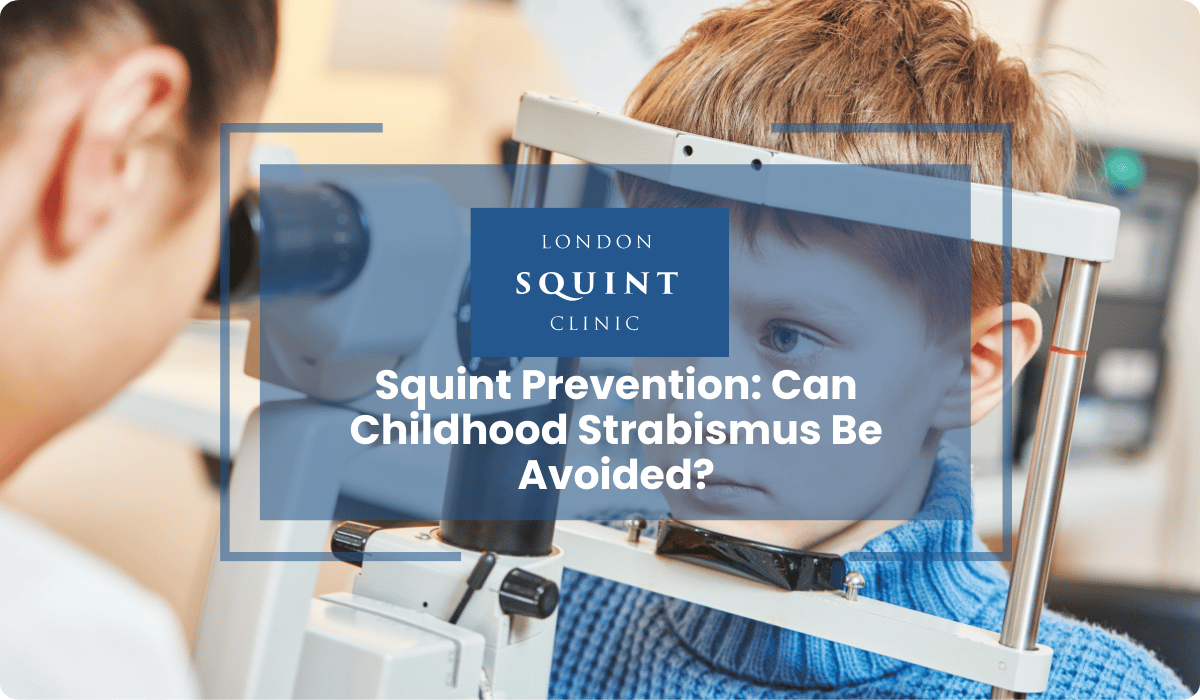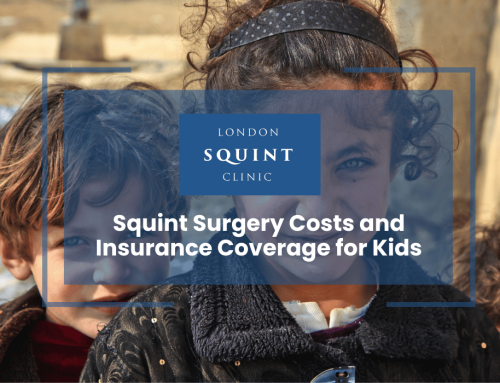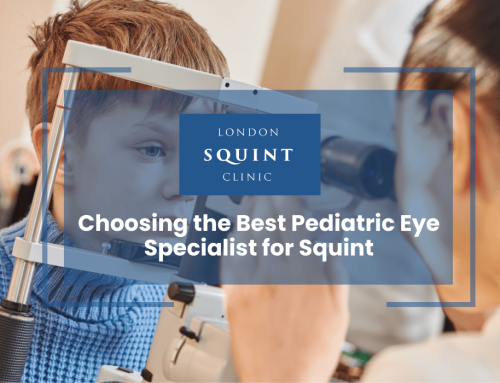Squint Prevention: Can Childhood Strabismus Be Avoided?
Preventing Childhood Squint: A Proactive Approach for Parents
Preventing childhood squint requires a proactive approach that combines regular vision screening, early detection of risk factors, and promoting healthy visual development. Parents play a crucial role in protecting their child’s eye health by ensuring attendance at recommended eye examinations, providing a stimulating environment for visual development, and being aware of the early signs of strabismus. Genetic factors may increase the risk of squint in some families, highlighting the importance of understanding family eye health history. By taking practical steps to support their child’s visual development and seeking prompt evaluation for any concerns, parents can help reduce the risk of squint and promote lifelong healthy vision.
Here is the blog post content with the specified sections and formatting:
Table of Contents
- Understanding Squint in Children: Causes and Risk Factors
- Early Signs of Strabismus: What Parents Should Look For
- The Role of Vision Screening in Squint Prevention
- Can Eye Exercises Help Prevent Childhood Squint?
- Promoting Healthy Visual Development in Babies and Toddlers
- Genetic Factors in Strabismus: Reducing Risk in High-Risk Families
- Protecting Your Child’s Eye Health: Practical Tips for Parents
Understanding Squint in Children: Causes and Risk Factors
Squint, medically known as strabismus, is a condition where the eyes do not align properly. One eye may turn inward, outward, upward, or downward while the other eye focuses normally. Squint can occur in children due to various factors, including refractive errors, muscle imbalances, and neurological issues. Some children are born with a higher risk of developing squint due to family history, premature birth, or certain genetic syndromes. Understanding these underlying causes and risk factors is crucial for early detection and intervention.
Early Signs of Strabismus: What Parents Should Look For
Early detection of squint is essential for timely treatment and prevention of potential complications like amblyopia (lazy eye). Parents should be aware of the subtle signs that may indicate their child has a squint. These include eyes that do not appear to be looking in the same direction, excessive blinking or squinting, tilting or turning the head to look at objects, and closing one eye in bright sunlight. If you notice any of these signs, it’s important to schedule an eye examination with a pediatric ophthalmologist for a proper diagnosis and treatment plan.
The Role of Vision Screening in Squint Prevention
Regular vision screening plays a vital role in the early detection and prevention of squint in children. The UK National Screening Committee recommends that all children have a vision screening at age 4-5 years. This screening can identify refractive errors, amblyopia, and squint at an early stage when treatment is most effective. Vision screening may include tests for visual acuity, eye alignment, and depth perception. If any issues are detected, the child will be referred to a pediatric ophthalmologist for a comprehensive eye examination and appropriate treatment. Parents should ensure their children attend these recommended screenings to promote healthy visual development.
Can Eye Exercises Help Prevent Childhood Squint?
While eye exercises can be beneficial for some visual skills, there is limited evidence to suggest they can prevent the development of squint in children. Squint often results from underlying anatomical or neurological factors that eye exercises alone cannot address. However, vision therapy exercises may be prescribed as part of a treatment plan for certain types of squint, particularly intermittent or convergence insufficiency strabismus. These exercises aim to improve eye coordination, focusing ability, and binocular vision. It’s important to note that eye exercises should only be performed under the guidance of a qualified pediatric ophthalmologist or orthoptist as part of a comprehensive treatment plan.
Promoting Healthy Visual Development in Babies and Toddlers
Encouraging healthy visual development from an early age can help reduce the risk of squint and other vision problems. Parents can promote their baby’s visual development by providing a stimulating environment with age-appropriate toys, books, and activities. Tummy time is important for building eye muscle strength and coordination. As babies grow into toddlers, activities that encourage hand-eye coordination, like stacking blocks or threading beads, can support visual skills. Ensuring a balanced diet rich in vitamins A, C, and E, as well as omega-3 fatty acids, can also contribute to healthy eye development. Regular check-ups with a pediatric ophthalmologist can monitor your child’s visual milestones and address any concerns promptly.
Learn more about how two eyes learn to work together in our related article on binocular vision development.
Genetic Factors in Strabismus: Reducing Risk in High-Risk Families
Genetic factors play a significant role in the development of squint, with a higher prevalence in families with a history of the condition. If you or your partner have a squint or a family history of strabismus, your child may be at increased risk. While genetic factors cannot be modified, understanding your family’s eye health history can help you take proactive steps to reduce your child’s risk. This may include earlier and more frequent eye examinations, prompt treatment of refractive errors, and close monitoring of visual development milestones. Genetic counseling may also be beneficial for families with a strong history of strabismus to understand inheritance patterns and potential risk-reduction strategies.
Protecting Your Child’s Eye Health: Practical Tips for Parents
As a parent, there are several practical steps you can take to protect your child’s eye health and reduce the risk of squint. Firstly, ensure your child attends all recommended vision screenings and eye examinations. Secondly, encourage a balanced diet rich in eye-healthy nutrients and limit excessive screen time. Provide age-appropriate toys and activities that promote visual development and hand-eye coordination. Protect your child’s eyes from UV damage with sunglasses and hats when outdoors. If your child requires glasses, ensure they wear them consistently as prescribed. Finally, be aware of the signs and symptoms of squint and seek prompt evaluation if you have any concerns about your child’s eye alignment or visual development.
Frequently Asked Questions
What are the early signs of squint in children?
Early signs of squint in children include eyes that do not appear to be looking in the same direction, excessive blinking or squinting, tilting or turning the head to look at objects, and closing one eye in bright sunlight. If you notice any of these signs, schedule an eye examination with a pediatric ophthalmologist for a proper diagnosis and treatment plan.
Can squint be prevented in children?
While not all cases of squint can be prevented, there are steps parents can take to reduce the risk. These include ensuring your child attends all recommended vision screenings and eye examinations, encouraging a balanced diet rich in eye-healthy nutrients, limiting excessive screen time, and providing age-appropriate toys and activities that promote visual development and hand-eye coordination.
At what age should children have their first eye examination?
The UK National Screening Committee recommends that all children have a vision screening at age 4-5 years. However, if you notice any signs of squint or have concerns about your child’s visual development, it’s important to schedule an eye examination with a pediatric ophthalmologist as soon as possible, regardless of age.
Is squint hereditary?
Yes, genetic factors play a significant role in the development of squint, with a higher prevalence in families with a history of the condition. If you or your partner have a squint or a family history of strabismus, your child may be at increased risk. Genetic counseling may be beneficial for families with a strong history of strabismus to understand inheritance patterns and potential risk-reduction strategies.
Can eye exercises cure squint in children?
While eye exercises alone cannot cure squint, they may be prescribed as part of a comprehensive treatment plan for certain types of squint, particularly intermittent or convergence insufficiency strabismus. These exercises aim to improve eye coordination, focusing ability, and binocular vision. However, eye exercises should only be performed under the guidance of a qualified pediatric ophthalmologist or orthoptist.
What should I do if I suspect my child has a squint?
If you suspect your child has a squint, schedule an eye examination with a pediatric ophthalmologist as soon as possible. Early detection and intervention are crucial for the successful treatment of squint and the prevention of potential complications like amblyopia (lazy eye). The pediatric ophthalmologist will perform a comprehensive eye examination and develop an appropriate treatment plan based on your child’s specific needs.
Find out if you are suitable for Double Vision Treatment
Not everyone is eligible for double vision surgery.
Find out if you could benefit from this life-changing surgery by taking the quick self-suitability quiz below:
Our most popular procedures

Hello, I’m Nadeem Ali
I’m one of the few eye surgeons in the world with 100% focus on Squint and Double Vision Surgery.
I have 24 years of eye surgery experience, and worked for 13 years as a Consultant at London’s renowned Moorfields Eye Hospital.
In 2023, I left the NHS to focus fully on treating patients from across the world at the London Squint Clinic. You can read more about me here.
There’s lots of information on the website about: squint surgery, double vision surgery and our pricing.
The most rewarding part of my job is hearing patients tell me how squint or double vision surgery has changed their lives. You can hear these stories here.
Mr Nadeem Ali
MA MB BChir MRCOphth FRCSEd(Ophth)





